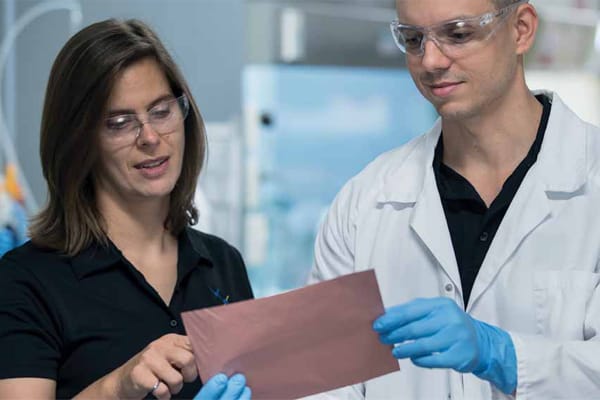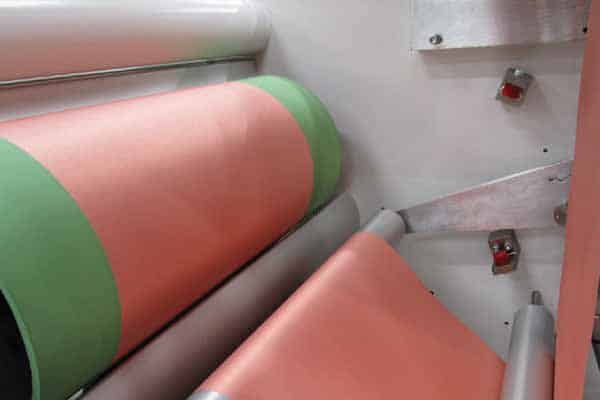Size matters in lithium-ion batteries
Australian start-up Nano-Nouvelle has used nanotechnology to develop a technology that increases the storage capacity of lithium-ion batteries, which are vital to the growing solar storage market. Adelle King reports.
Nano-Nouvelle was founded in 2011 with the aim of developing nano-materials to solve global problems. Early research looked at a range of energy technologies, including thermo-electric materials and solar cells, before the company began exploring nanotechnology targeted towards applications requiring high energy storage with low weight or small size.
ADVERTISEMENT
Nanotechnology, which is science, engineering and technology conducted at an atomic and molecular scale, works with materials that have at least one dimension sized from one to 100nm. It’s considered a key technology for the future due to the variety of potential applications but is particularly important in the burgeoning solar market.
This is because nanotechnology is able to turn flat surfaces into three-dimensional ones, creating more space for the reactions that enable energy storage or generation to take place. Since renewable energy sources, such as solar panels, can’t be turned off and on, excess energy can go to waste if it’s not immediately needed. Batteries solve this problem by allowing utility companies to collect excess electricity and store it, while nanotechnology helps to significantly increase battery capacity.
Intermittency has been a big barrier to large-scale solar generation but developments in nanotechnology can make renewable energy more reliable and solar cells cheaper to produce.
These significant benefits to energy storage are particularly important in lithium-ion batteries, which have become a key element in storing electricity. This is the area Nano-Nouvelle is focused on, developing electrode components for high performance lithium-ion batteries.
The Sunshine Coast-based company has successfully trialled a nanotechnology material known as Copper Lumafoil, which can replace the conventional solid copper foil current collectors used in most batteries.
“Lithium-ion batteries have been made in essentially the same way since they were commercialised 25 years ago. There has been an incredible amount of optimisation to improve energy density but the opportunities for further improvement within that same structure are now limited. We saw that by changing the underlying assumptions about the structure of the battery electrode, we could make a bigger improvement,” said Nano-Nouvelle chief executive Stephanie Moroz.
Nano-Nouvelle’s core technology is a porous polymer material that appears solid to the naked eye because the pores are at a very small scale and which can enable significant weight reduction. This material is coated in a thin layer of copper to make it conductive, producing the Copper Lumafoil. The result is a three-dimensional porous material that can boost the energy storage capacity of lithium-ion batteries by as much as 10% and reduce current collector weight by as much as 70%.
“The battery will be lighter than other lithium-ion batteries and we also expect to see it last for more cycles,” says Stephanie.
While Nano-Nouvelle is currently testing to confirm this potential effect, a production trial with UK equipment manufacturer Cemco in 2016 found that the Copper Lumafoil is compatible with industrial-scale manufacturing, with output rates 100 times faster than existing production methods.
The company has been working with suppliers and customers worldwide to ensure its technology platform is useable in today’s battery assembly production lines and, in a trial at Oregon-based Polaris Battery Labs in April, it proved that Copper Lumafoil is strong enough to produce commercial quantities.
A graphite layer was successfully applied to Copper Lumafoil, proving that graphite adheres well to the porous nanostructure and that it can be a plug-and-play replacement for solid copper current collectors.
Nano-Nouvelle hopes to move Copper Lumafoil into commercial production by the end of 2018 after closing a $3.7m financing round in 2015 and gaining backing from Simon Hackett, a technology entrepreneur, founder of Redflow and recent contributor to Electrical Connection. The company also won a $422,201 grant from the Australian Government’s Entrepreneur’s Program to bring Copper Lumafoil to market.
While the company says its initial markets are small batteries for consumer electronic products, such as drones and mobile phones, the technology can be developed for larger batteries for electricity grids.
“Copper Lumafoil will contribute to the overall competitiveness of lithium-ion batteries, which will be important for certain applications of solar, especially distributed electricity generation,” says Stephanie.
Distributed electricity generation is becoming increasingly important to Australia’s electricity network, with the CSIRO and Energy Networks Australia’s Electricity Network Transformation Roadmap envisaging greater emphasis on generating electricity through distributed technologies.
As batteries move into more demanding and critical uses in electricity grids and household storage systems, Nano-Nouvelle’s technology is laying the foundation for a new generation of high capacity lithium-ion batteries that overcome the limitations of current materials.
These will be vital to the future of renewable energy, with the International Renewable Energy Agency’s REmap 2030 report estimating that 150GW of battery storage will be required globally to meet the 45% share of renewable energy in electricity sectors needed by 2030 to avoid the worst effects of climate change.
Australia’s total solar capacity reached 6GW in April, according to the Australian Photovoltaic Institute, but is expected to reach 50GW by 2040 as solar becomes cheaper and advancements in nanotechnology continue.
“Australia has enormous renewable energy resource, which could ensure our energy security. Energy storage can allow the grid to become more dependent on those resources and enable them to meet nearly all our energy needs,” says Stephanie.
-
ADVERTISEMENT
-
ADVERTISEMENT



